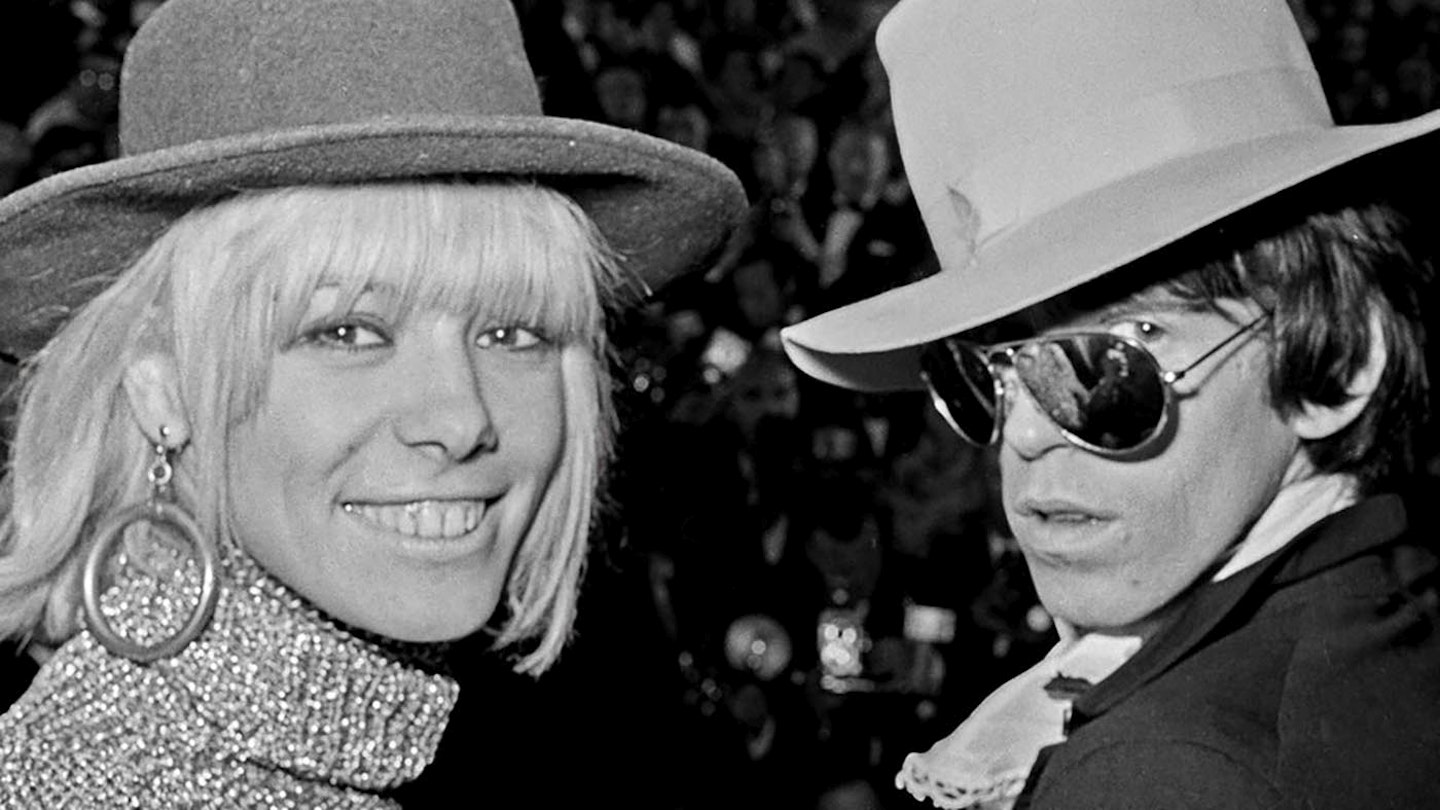“I’VE BEEN CALLED a witch, a slut and a murderer,” wrote Anita Pallenberg in the memoir composed during the sober years before her death at 75 in 2017. Now, that unpublished script – titled, with typical defiance, Black Magic – forms the basis of a two-hour documentary, Catching Fire: The Story Of Anita Pallenberg. It hits British cinemas this month.
Inevitably, as First Lady of The Rolling Stones, the documentary weaves the personal with the musical. There’s her testy 18-month relationship with her doppelganger Stone, Brian Jones. Then the union with Keith Richards from 1967 to 1980. Raw testimony from the pair’s children, Marlon and Angela, off-screen contributions from Richards, plus Pallenberg’s own observations shed new light on these years.
-
READ MORE: The Rolling Stones Unseen!
Given the Richards’ family ’s blessing, the documentary is rich in home movie footage including a cape-wearing Pallenberg dancing freely in a garden and film of the Mick’n’Marianne/ Keith’n’Anita getaway to South America at Christmas 1968. But it’s Pallenberg’s candid recollections, voiced by Scarlett Johansson, that form the spine of the film.
Prince Stanislas Klossowskide Rola – popularly known as Prince Stash – first met her in Paris in 1964 and appears in the film. “Anita could be ruthless and relentless when she wanted something or someone,” he tells MOJO. Once ‘rescued’ from Jones by Richards in spring 1967, Keith recounts that he was initially “bewildered [by] her absolute determination to be… free. Anita just wanted to kick it all over.”
The Stones were bourgeois by comparison to Anita!
Prince Stash
During their earliest days together, Pallenberg says, “Keith was so shy.” It was her “Italian energy ” and eye for Bohemian style that transformed him into “a lion”.
“I loved the feeling of culture exploding,” Pallenberg says as the film traces her pre-Stones years. She discovers that her great-grandfather was Symbolist painter Arnold Böcklin, who specialised in “bestial satyrs and sleeping nymphs”. Stash, a scion of master painter Balthus, tells MOJO that she and he, “shared this whole debauched, libertine lifestyle. The Stones were bourgeois by comparison! Anita brought all that to the Stones.”
She also inspired several songs, including Mick Jagger’s You Can’t Always Get What You Want and Richards’ You Got The Silver. As the film reveals, dynamics between Pallenberg and Richards, now parents, changed by the early ’70s, when she realised that his music came first. Heroin seemed “like a solution”, says the voiceover.
We also learn that, after the sudden death of Jones in 1969, Pallenberg found herself putting pictures of him all around the house. She also disliked the word ‘nice’ and wasn’t big on ‘help’ either. But after attending AA meetings and rehab in her mid-forties, she graduated from Saint Martins in textiles and fashion, made a return to acting and, feted by superfans like Kate Moss, to the catwalk. “She found her true self,” says Moss. Pallenberg even found herself portraying the Queen in Harmony Korine’s 2007 movie Mister Lonely, both convincingly and subversively.
“What I loved about Anita,” Richards concludes, “was how she operated. [There was] almost an innocence about it even in its most Machiavellian form!”
The final word, of course, is Anita’s. “Keith’s no angel. But neither am I.”
Catching Fire: The Story Of Anita Pallenberg, directed by Alexis Bloom and Svetlana Zill, is released by Dogwoof in UK and Irish cinemas on May 17. More info HERE.
Picture: Getty
